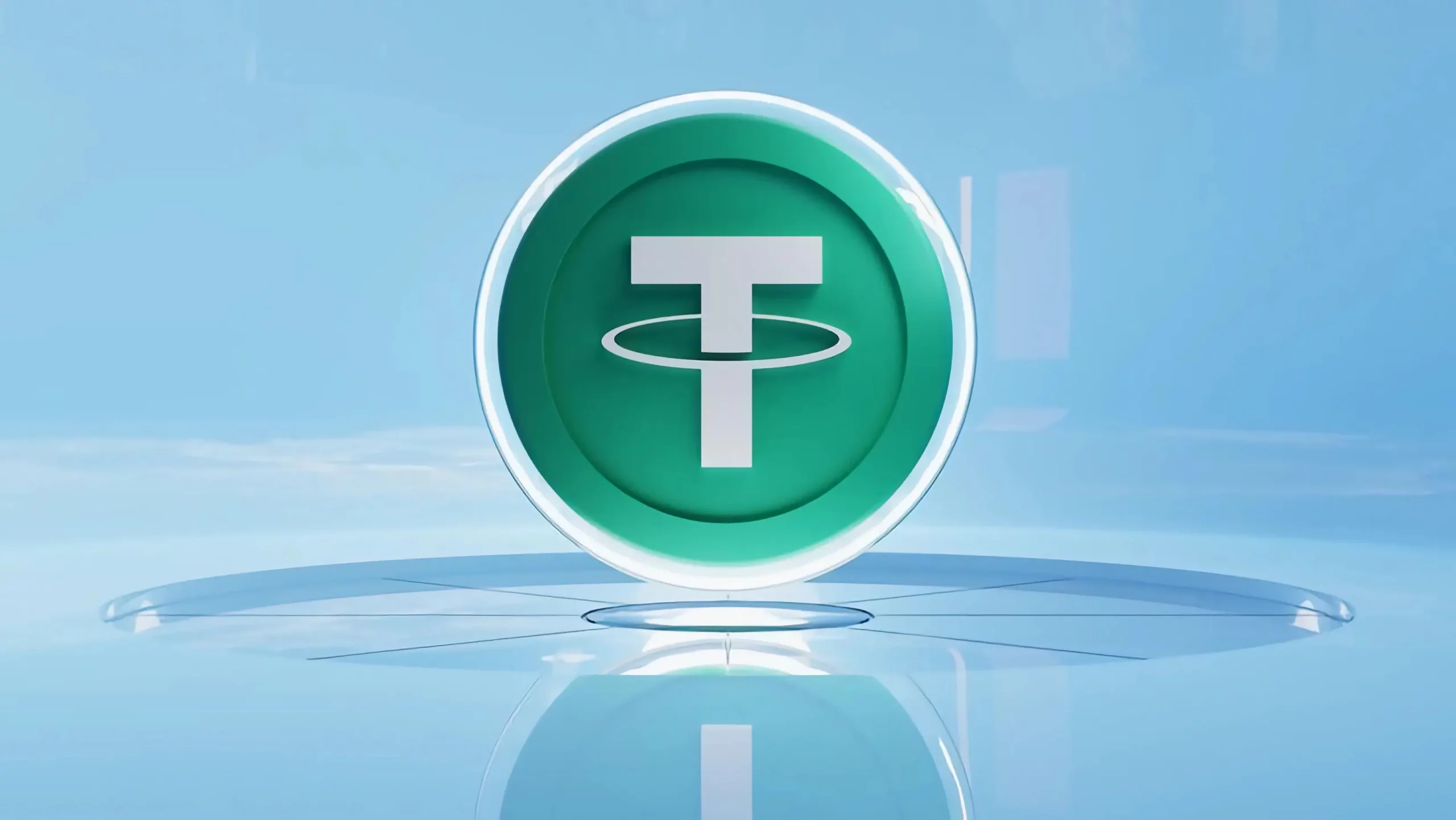Cryptocurrencies have taken the financial world by storm in recent years. These digital assets, built on blockchain technology, are becoming increasingly popular. Among the vast array of cryptocurrencies available, some stand out due to their unique features.
In this article, we’ll explore one such cryptocurrency, Tether (USDT), and shed light on its significance in the cryptocurrency landscape.
What is Tether (USDT)?
Tether, often denoted as USDT, is a type of cryptocurrency known as a “stablecoin.”
Now, what makes it “stable”?
A stablecoin is a digital currency designed to maintain a consistent value, and it achieves this by being pegged to real-world assets, like fiat currencies or commodities.
The very essence of Tether’s stability lies in its pegging mechanism. Tether tokens are anchored to real-world assets, and this peg is generally 1:1, meaning for every Tether (USDT) token in circulation, there is an equivalent amount of the chosen asset held in reserve.
Typically, this asset is the U.S. dollar, which makes Tether a USD-backed stablecoin. For example, if there are 10 million USDT tokens in circulation, there should be $10 million USD held in reserve. This direct pegging to fiat currency brings a level of predictability that other cryptocurrencies lack. It ensures that the value of one USDT token remains close to one U.S. dollar. In other words, 1 USDT is intended to be worth 1 USD, and this relationship is maintained with remarkable consistency.
No wonder, Tether is the most widely used stablecoin in the cryptocurrency market, and its stability is a key factor that sets it apart from more volatile cryptocurrencies.
Certainly, let’s explore the diverse use cases of Tether (USDT) within the cryptocurrency ecosystem, emphasizing its pivotal roles as a medium of exchange, a store of value, and a unit of account, as well as its significance as a hedge against cryptocurrency market volatility.
Use cases for Tether
Tether serves multiple purposes within the cryptocurrency ecosystem. It acts as a medium of exchange, enabling users to make transactions and payments with ease. Additionally, it functions as a store of value, allowing users to safeguard their assets during times of market turbulence.
Furthermore, Tether serves as a unit of account, providing a common measure for valuing other cryptocurrencies and assets in the digital realm. Many traders and investors turn to Tether to hedge against the volatile nature of other cryptocurrencies. We’ll explore this in detail.
1. Medium of Exchange
Tether serves as an efficient and practical medium of exchange within the cryptocurrency landscape. Just as traditional fiat currencies are used for everyday transactions, USDT enables users to swiftly and seamlessly carry out payments, transfers, and exchanges. Its stability and predictable value make it a dependable choice for conducting transactions without the concerns of rapid price fluctuations that are common with other cryptocurrencies. This characteristic makes Tether a suitable option for individuals and businesses looking to engage in daily commerce within the digital realm.
2. Store of Value
During times of market turbulence or when users seek to preserve their wealth, Tether functions as a reliable store of value. While many cryptocurrencies are renowned for their potential for rapid appreciation, they are equally prone to significant depreciation. In contrast, Tether’s stable value shields it from the erratic price swings that are prevalent in the cryptocurrency market. This characteristic makes it an ideal choice for individuals looking to park their assets securely during volatile periods, safeguarding their holdings against potential value erosion.
3. Unit of Account
Tether also plays a critical role as a unit of account within the cryptocurrency ecosystem. A unit of account is essentially a common measure for valuing other cryptocurrencies and assets. Given its consistent value, Tether serves as a reference point against which other digital assets can be measured. This is particularly valuable in the realm of cryptocurrency trading and investment. Traders can use Tether as a stable benchmark to assess the value of different cryptocurrencies and make informed decisions when navigating a market characterized by varying degrees of volatility.
4. Hedging Against Volatility
The cryptocurrency market is notorious for its inherent volatility, with digital assets often experiencing significant price fluctuations in short time frames. Many traders and investors find refuge in Tether as a hedge against this volatility. When they anticipate adverse market conditions or wish to secure their gains, they can convert their holdings into Tether, knowing that its value is unlikely to change dramatically. This strategic move mitigates their exposure to the potential loss of value in more volatile cryptocurrencies and provides a safe harbor in turbulent market waters.
In conclusion, Tether (USDT) is not merely a stablecoin; it’s a versatile and integral tool within the cryptocurrency ecosystem. Its multifaceted use cases extend from facilitating everyday transactions to serving as a reliable store of value during market uncertainties. Tether also acts as a standard unit of account and plays a pivotal role in risk management by allowing users to hedge against the inherent volatility of other digital assets. In a world where price stability is often elusive, Tether stands as a beacon of consistency, catering to a diverse array of user needs within the dynamic cryptocurrency space.
Certainly, let’s delve into the criticisms and controversies surrounding Tether (USDT), as well as the measures taken by Tether to address these issues and enhance transparency, ultimately building trust within the cryptocurrency community.
Criticisms and Controversies
Tether, like any innovation in the cryptocurrency space, has not been immune to scrutiny and controversy. Several concerns have been raised, primarily revolving around its transparency and the potential for misuse in financial activities. Here are the key points of criticism:
1. Lack of Transparency
One of the primary criticisms directed at Tether is its perceived lack of transparency. Early on, there were concerns about whether Tether truly held the equivalent amount of fiat currency in reserve to match the number of USDT tokens in circulation. This lack of clarity about its reserves led to skepticism within the cryptocurrency community and among regulators.
2. Money Laundering and Market Manipulation
Tether has also faced allegations of being used for illicit activities, including money laundering. Critics have expressed concerns that the anonymity associated with cryptocurrencies, combined with Tether’s widespread adoption, might create opportunities for bad actors to exploit the system for money laundering purposes. Additionally, there were fears that Tether could be utilized for market manipulation, given its pivotal role in the cryptocurrency market.
3. Regulatory Scrutiny
Due to these concerns, Tether has been subjected to regulatory scrutiny in various jurisdictions. Regulatory bodies have examined its operations and reserves to ensure compliance with financial regulations. This has included investigations and inquiries into its financial practices and the degree to which it adheres to anti-money laundering (AML) and know your customer (KYC) guidelines.
Tether’s Response and Improved Transparency
It’s important to note that Tether has taken a proactive approach to address these criticisms and controversies. In an effort to enhance transparency and build trust within the cryptocurrency community, the company has implemented several measures:
1. Regular Audits
Tether has engaged reputable accounting and auditing firms to conduct regular audits of its reserves. These audits are designed to verify that Tether indeed holds an amount of fiat currency equal to the number of USDT tokens in circulation. While the company has faced skepticism in the past, these audits have been seen as a step toward greater transparency.
2. Enhanced Reporting
Tether has improved its transparency by providing more comprehensive reports about its reserves. This includes regularly disclosing the composition of the assets backing USDT and making this information accessible to the public. Such practices aim to provide more clarity about its financial operations.
3. Regulatory Compliance
In response to regulatory concerns, Tether has taken steps to enhance compliance with AML and KYC regulations. This includes implementing procedures to verify the identities of users and ensure that the platform is not being used for illegal activities.
Conclusion
In conclusion, Tether, or USDT, plays a pivotal role in the world of cryptocurrencies. As a stablecoin, it provides a level of predictability and reliability that many other cryptocurrencies can’t offer. While it has faced some challenges and controversies, Tether remains a significant player in the cryptocurrency ecosystem. Its straightforward approach to maintaining a stable value continues to make it a popular choice for traders, investors, and cryptocurrency enthusiasts worldwide.






